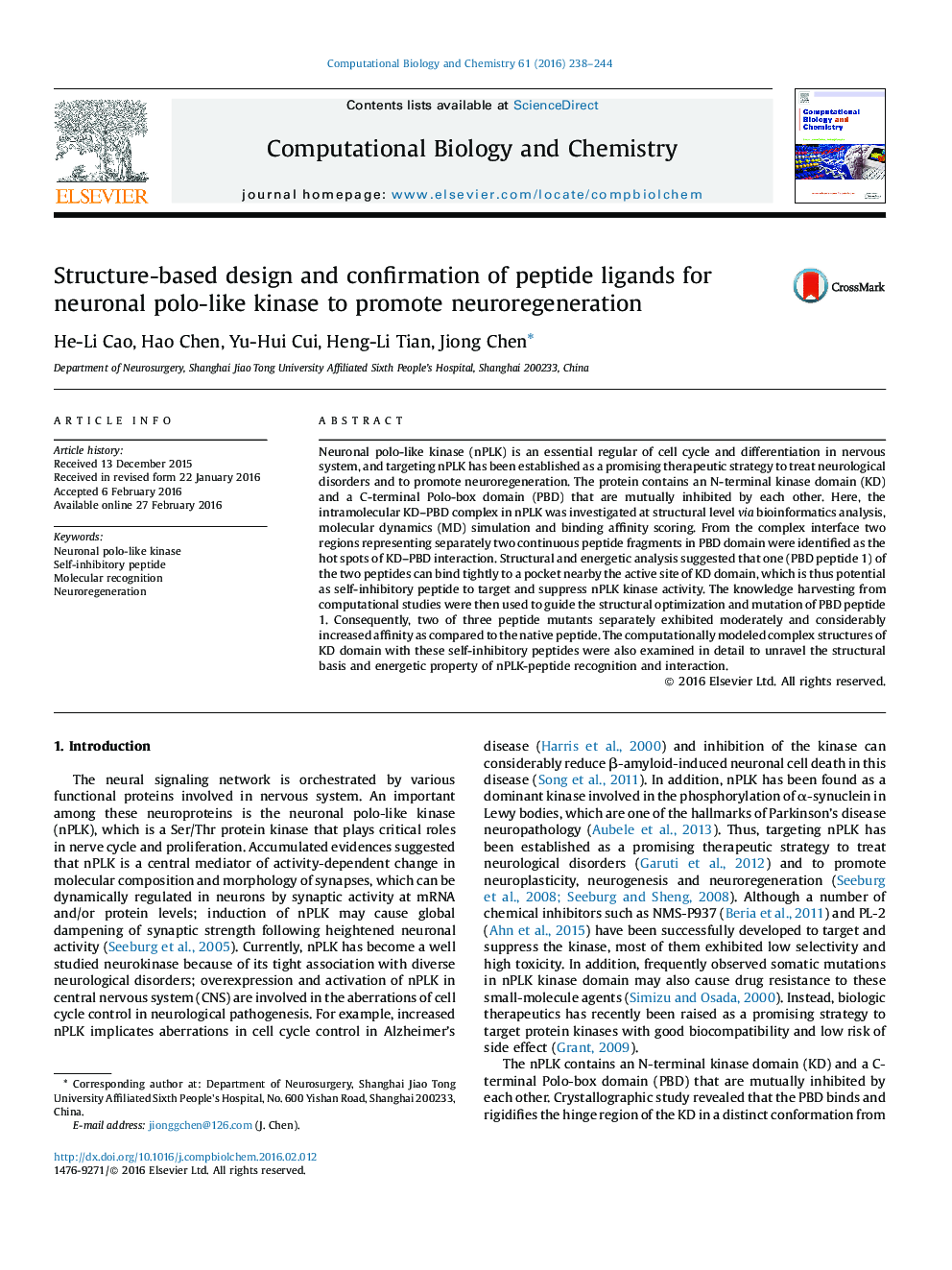| کد مقاله | کد نشریه | سال انتشار | مقاله انگلیسی | نسخه تمام متن |
|---|---|---|---|---|
| 14949 | 1362 | 2016 | 7 صفحه PDF | دانلود رایگان |
• The intramolecular KD–PBD interaction in nPLK is investigated at structural level.
• Two continuous peptide fragments are identified as hot spots at the interaction interface.
• One of the two fragments is potential as self-inhibitory peptide to target nPLK.
• The peptide is structurally optimized to derive several mutants with improved activity.
Neuronal polo-like kinase (nPLK) is an essential regular of cell cycle and differentiation in nervous system, and targeting nPLK has been established as a promising therapeutic strategy to treat neurological disorders and to promote neuroregeneration. The protein contains an N-terminal kinase domain (KD) and a C-terminal Polo-box domain (PBD) that are mutually inhibited by each other. Here, the intramolecular KD–PBD complex in nPLK was investigated at structural level via bioinformatics analysis, molecular dynamics (MD) simulation and binding affinity scoring. From the complex interface two regions representing separately two continuous peptide fragments in PBD domain were identified as the hot spots of KD–PBD interaction. Structural and energetic analysis suggested that one (PBD peptide 1) of the two peptides can bind tightly to a pocket nearby the active site of KD domain, which is thus potential as self-inhibitory peptide to target and suppress nPLK kinase activity. The knowledge harvesting from computational studies were then used to guide the structural optimization and mutation of PBD peptide 1. Consequently, two of three peptide mutants separately exhibited moderately and considerably increased affinity as compared to the native peptide. The computationally modeled complex structures of KD domain with these self-inhibitory peptides were also examined in detail to unravel the structural basis and energetic property of nPLK-peptide recognition and interaction.
Figure optionsDownload as PowerPoint slide
Journal: Computational Biology and Chemistry - Volume 61, April 2016, Pages 238–244
